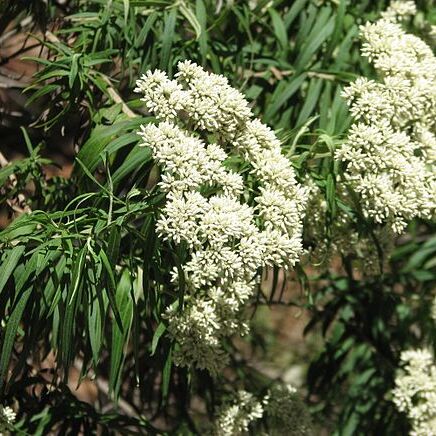Shrubs or small trees, rarely herbs. Lvs alternate, simple, entire. Capitula in small corymbs; corymbs aggregated into rounded, flat, or pyramidal, dense or diffuse panicles. Involucral bracts in 3-5 rows, imbricate, membranous; innermost bracts often with white, erect or rarely slightly radiating lamina. Receptacle convex; scales usually present, sometimes O, often with white, erect or rarely radiating apices. Florets usually all ☿, tubular, sometimes a few outer florets ♀ and filiform. Achenes all similar, angled, terete or slightly compressed; pappus hairs in 1 row, narrow or thickened at apex.

